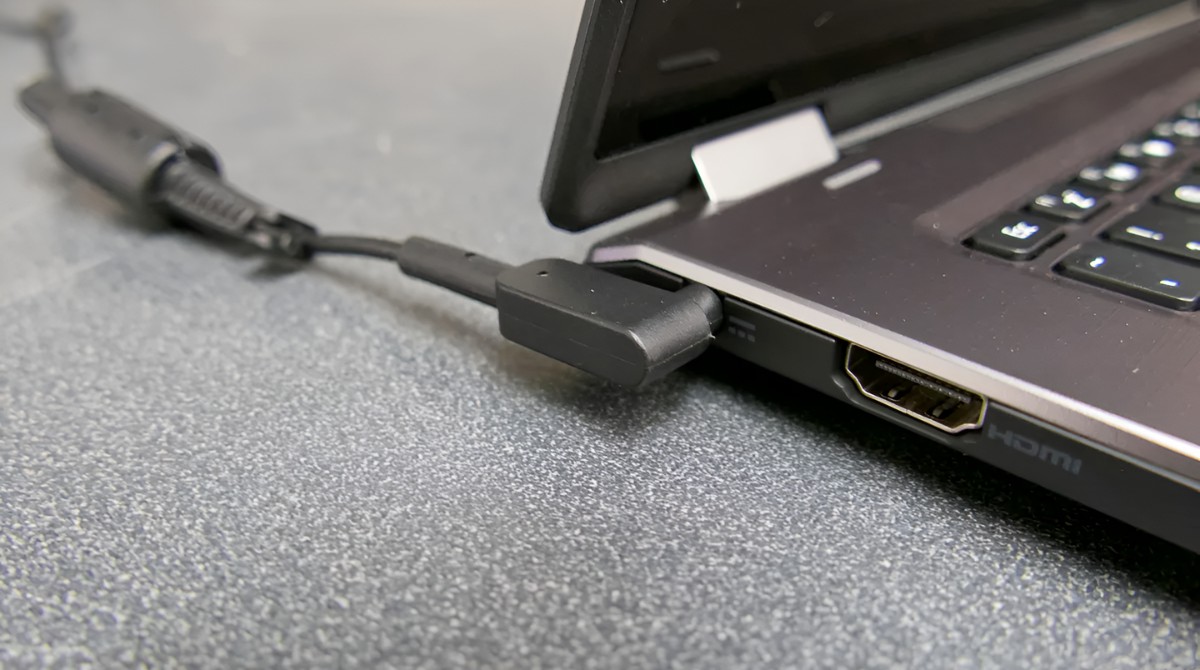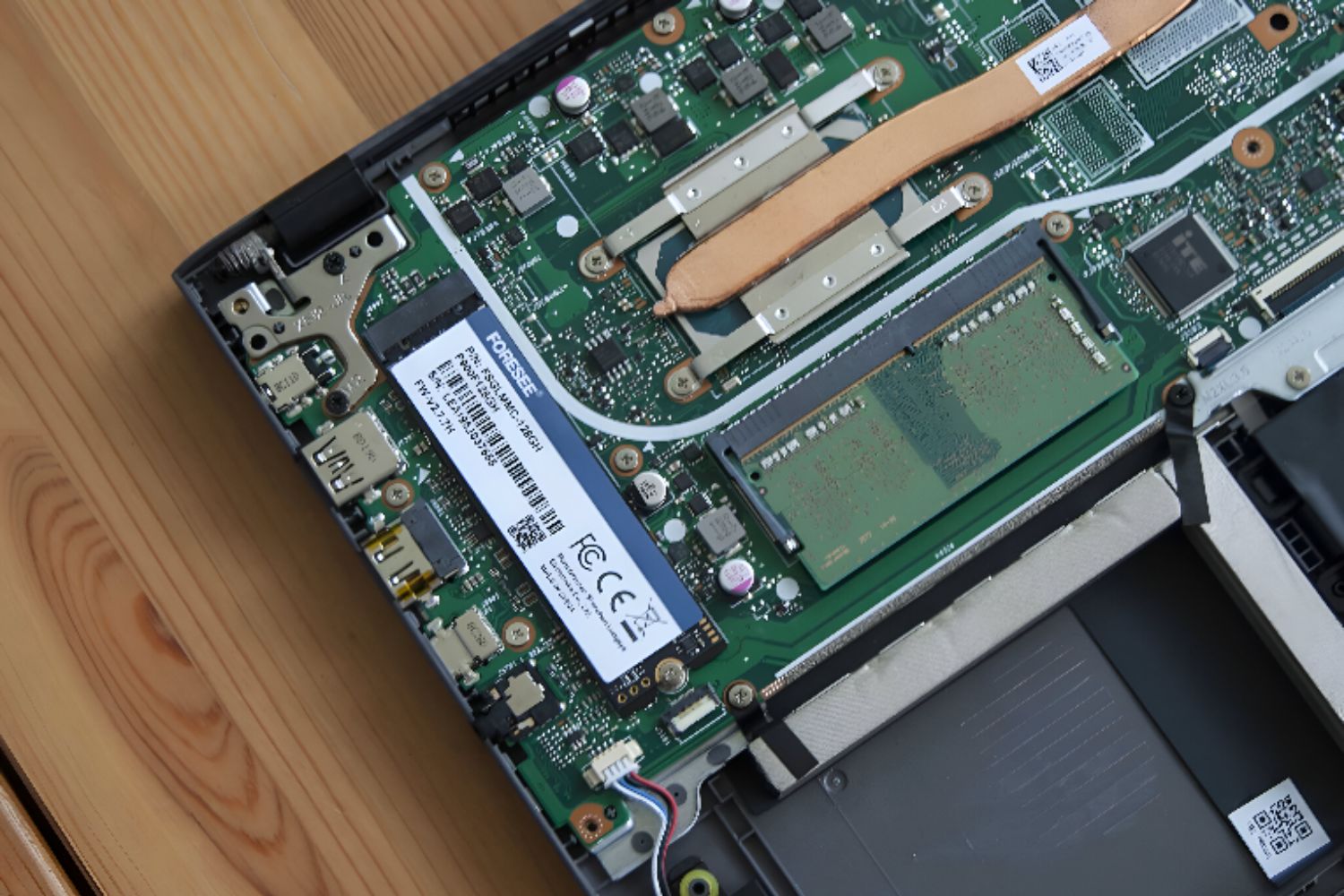Introduction
Welcome to the world of ASUS Ultrabooks! These sleek and powerful devices offer superior performance and cutting-edge features, making them an ideal choice for professionals and tech enthusiasts alike. As with any computer, accessing the BIOS (Basic Input Output System) is a crucial step in managing system settings and troubleshooting issues. In this article, we will explore different methods to help you get to the BIOS on your ASUS Ultrabook.
The BIOS is a firmware embedded in your computer’s motherboard that initializes hardware components and launches the operating system. It contains a set of instructions that controls various aspects of your system, including boot order, system clock, and hardware settings. Accessing the BIOS allows you to tweak these settings, update firmware, and perform other essential tasks.
While the process of accessing the BIOS may vary slightly depending on the model and operating system of your ASUS Ultrabook, we will cover the most common methods applicable to Windows 10-powered devices. Whether you need to change your boot priority, enable virtualization, or simply explore the various options available, we’ve got you covered.
In the following sections, we will explore four different methods to access the BIOS on your ASUS Ultrabook. These methods include using the BIOS key during startup, utilizing the Windows 10 Settings app, accessing the Advanced Startup options, and leveraging the Restart feature in Windows 10. Each method offers its own advantages and may be more suitable depending on your specific requirements and preferences.
So, if you’re ready to take control of your ASUS Ultrabook and explore the underpinnings of your system, let’s dive into the different methods to access the BIOS. Whether you’re a seasoned tech pro or a beginner in the world of computers, we will guide you through each step to ensure a smooth and successful journey. So, grab your ASUS Ultrabook and let’s get started!
Method 1: Using the BIOS key during startup
One of the most common and straightforward methods to access the BIOS on your ASUS Ultrabook is by using a specific key during startup. This key varies depending on the model and manufacturer of your computer, but common BIOS keys include F2, Del, Esc, or F10. Here’s how you can use this method:
1. Start your ASUS Ultrabook or restart it if it’s already turned on.
2. Keep an eye on the screen during the boot process. You will see a brief message indicating the key to press to enter the BIOS. It is usually displayed as “Press (key) to enter BIOS” or something similar.
3. Once you identify the correct key, press it repeatedly. Make sure to press it before the operating system starts loading. If you miss the timing, restart your computer and try again.
4. The ASUS BIOS utility will now open, allowing you to explore and modify various settings.
Please note that accessing the BIOS using this method may require quick reflexes, as the screen prompt is often visible for only a few seconds. If you miss the chance, simply restart your computer and try again.
Navigating the ASUS BIOS is typically done using the arrow keys on your keyboard. Use the arrow keys to move between options and the Enter key to select or enter submenus.
Once you are finished making changes in the BIOS, navigate to the Exit menu and select the option to save your settings and exit. Your ASUS Ultrabook will then restart with the modified settings in place.
Using the BIOS key during startup method is a simple yet effective way to access and manage the BIOS on your ASUS Ultrabook. However, if you’re unable to access the BIOS using this method or prefer an alternative approach, don’t worry. We will explore other methods in the following sections.
Method 2: Using Windows 10 Settings
If you prefer a more user-friendly and graphical approach, you can also access the BIOS on your ASUS Ultrabook through the Windows 10 Settings app. This method allows you to access the BIOS without rebooting your computer. Here’s how you can use this method:
1. Click on the Start Menu button and select the Settings (gear icon) option. Alternatively, you can press the Windows key + I on your keyboard to open the Settings app directly.
2. In the Settings app, click on the “Update & Security” option.
3. From the left-hand side menu, select “Recovery.”
4. Scroll down and under the “Advanced startup” section, click on the “Restart now” button. This will initiate a restart of your ASUS Ultrabook.
5. After the restart, you will see a blue screen with several options. Select “Troubleshoot.”
6. In the Troubleshoot menu, click on “Advanced options.”
7. Under the Advanced options, click on “UEFI Firmware Settings.” This will take you to the BIOS screen.
Please note that if you have a BIOS password set on your ASUS Ultrabook, you will need to enter it at this stage to proceed further.
Once you access the BIOS through the Windows 10 Settings method, you can navigate the different options using your keyboard or mouse, depending on your ASUS Ultrabook model and the BIOS interface.
Remember to save any changes you make in the BIOS before exiting, as this method doesn’t automatically save your modifications. You can typically find the option to save and exit under the Exit or Boot tab.
Using Windows 10 Settings to access the BIOS offers a convenient and hassle-free way to make changes to your ASUS Ultrabook’s BIOS settings. It eliminates the need to restart your computer and provides a more intuitive interface for those who prefer a graphical user interface.
Next, we will explore another method to access the BIOS on your ASUS Ultrabook: using the Advanced Startup options in Windows 10.
Method 3: Using the Advanced Startup options
Another method to access the BIOS on your ASUS Ultrabook is by utilizing the Advanced Startup options in Windows 10. This method allows you to restart your computer into a special mode where you can access various troubleshooting and system management tools, including the BIOS. Here’s how you can use this method:
1. Open the Start Menu and click on the power icon, then hold down the Shift key on your keyboard and click on “Restart.” This will initiate a restart of your ASUS Ultrabook.
2. After the restart, you will be presented with the “Choose an option” screen. Click on “Troubleshoot.”
3. In the Troubleshoot menu, click on “Advanced options.”
4. Under Advanced options, click on “UEFI Firmware Settings.” This will take you to the BIOS screen.
Please note that if you have a BIOS password set on your ASUS Ultrabook, you will be asked to enter it at this stage to proceed further.
Once you access the BIOS through the Advanced Startup options method, you can navigate the various settings using your keyboard or mouse, depending on your ASUS Ultrabook model and the BIOS interface.
Make sure to save any changes you make in the BIOS before exiting, as this method doesn’t automatically save your modifications. You can typically find the option to save and exit under the Exit or Boot tab.
Using the Advanced Startup options in Windows 10 provides a convenient way to access the BIOS without interrupting your workflow. It is especially useful when you need to troubleshoot issues or modify BIOS settings while still within the Windows environment.
Now that you’ve learned how to access the BIOS using the Advanced Startup options, let’s move on to the final method in this article: using the Restart feature in Windows 10.
Method 4: Using the Restart feature in Windows 10
The last method we will explore to access the BIOS on your ASUS Ultrabook involves using the Restart feature in Windows 10. This method allows you to restart your computer and access the BIOS directly from the Windows environment. Here’s how you can use this method:
1. Click on the Start Menu button and select the Power icon.
2. Press and hold the Shift key on your keyboard, then click on the “Restart” option. This will initiate a restart of your ASUS Ultrabook.
3. After the restart, your computer will display the “Choose an option” screen. Select “Troubleshoot.”
4. In the Troubleshoot menu, click on “Advanced options.”
5. Under Advanced options, click on “UEFI Firmware Settings.” This will take you to the BIOS screen.
Please note that if you have set a BIOS password on your ASUS Ultrabook, you will be required to enter it at this stage to proceed further.
Once you access the BIOS through the Restart feature method, you can navigate the different options using your keyboard or mouse, depending on your ASUS Ultrabook model and the BIOS interface.
Remember to save any changes you make in the BIOS before exiting, as this method doesn’t automatically save your modifications. You can typically find the option to save and exit under the Exit or Boot tab.
Using the Restart feature in Windows 10 provides a convenient way to access the BIOS without the need to restart your computer manually or go through the Windows settings. It allows you to access the BIOS directly from the comfort of the Windows environment.
With this method, you can quickly make changes to your ASUS Ultrabook’s BIOS settings and get back to using your computer in no time.
Now that you’ve learned four different methods to access the BIOS on your ASUS Ultrabook, you have all the tools you need to manage your system settings, troubleshoot issues, and explore the advanced options offered by your ASUS Ultrabook’s BIOS.
Remember to proceed with caution when making changes in the BIOS, as improper settings can cause issues with your computer’s performance. If you are unsure about any specific settings or modifications, it’s always a good idea to consult the ASUS user manual or reach out to ASUS support for guidance.
Happy exploring and enjoy the full potential of your ASUS Ultrabook!
Conclusion
Accessing the BIOS on your ASUS Ultrabook is an essential skill that allows you to manage system settings, troubleshoot issues, and optimize your computer’s performance. In this article, we explored four different methods to access the BIOS, including using the BIOS key during startup, Windows 10 Settings, Advanced Startup options, and the Restart feature in Windows 10.
Each method offers its own advantages and may be more suitable depending on your preferences and specific requirements. Whether you prefer a traditional key-based approach, a user-friendly graphical interface, or the convenience of accessing the BIOS without rebooting your computer, you now have multiple methods to choose from.
Remember to exercise caution when making changes in the BIOS, as incorrect settings can cause issues with your computer’s performance. Always consult the ASUS user manual or contact ASUS support if you are unsure about any specific settings.
By gaining access to the BIOS, you can customize your ASUS Ultrabook to suit your needs, enable or disable specific hardware features, adjust boot order, update firmware, and more. It empowers you to take control of your system and make the most out of your ASUS Ultrabook’s capabilities.
Now that you have a comprehensive understanding of how to access the BIOS on your ASUS Ultrabook, you can confidently navigate through the various options available and unlock the full potential of your device.
So, grab your ASUS Ultrabook and start exploring the BIOS today. Take advantage of the powerful customization options and fine-tune your system to meet your specific requirements. Whether you’re a tech enthusiast or a casual user, mastering the BIOS will enable you to maximize your ASUS Ultrabook’s performance and enhance your overall computing experience.
Happy BIOS tweaking!

























